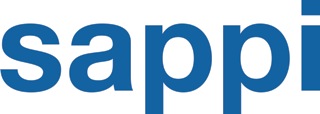Sustainability Report 2013: Sustainable Forestry
Responsible manufacturing begins with a commitment to responsible sourcing of raw materials.

SFPNA Sustainability Report 2013
At Sappi, we source 100 percent of our wood and market kraft pulp from well-managed forests. Sustainable forest management practices integrate reforestation with harvesting of trees while conserving air, soil and water quality along with wildlife and aquatic habitats. Landowners and foresters must work together to balance multiple objectives across a spectrum of environmental, social and economic aspects.
Strong Legal Framework
In the US, forest management is governed by a comprehensive system of state and federal laws impacting social and environmental practices. Included in federal legislation are laws that:
- Protect threatened and endangered species
- Regulate activities in forested wetlands
- Regulate chemical use
- Provide for safe harvesting and fair labor practices
At the state level there are additional laws and agencies that work to support sustainable forestry practices. Beyond our legislative framework there are numerous voluntary programs, including certification programs, that help assure wood and paper products are being sourced from sustainably managed forests.
Logger Certification
At the point of harvest, the logging professional has a direct and immediate impact on how well a forest management plan is executed. There are a host of independent logger certification programs that cover a breadth of training criteria around the core subjects of safety, environmental impact and productivity. Certification requires classroom training as well as field work. Independent audits also evaluate harvesting sites.
When Sappi contracts directly with a professional logger in the state of Maine, we require that the logger is certified by either the Maine Master Logger Program or the Certified Logging Professional program.
Forest Management Certification
Less than 10 percent of the world’s forests are certified to a credible third party forest management standard; however, 53 percent of Maine’s and 52 percent of Minnesota’s forests are certified. And while these two states have relatively high levels of certification, it remains a challenge to increase our level of certified fiber cost effectively. For example, within the primary procurement zones near our Cloquet mill, we estimate that only 35 percent of the forests are certified. The Minnesota state-owned forests are certified; however, many of the small private landowners and the federal lands are not. We face similar challenges in Maine, where over 90 percent of the land is privately held.
Our goal is to achieve a level of 65 percent certified fiber across all operations by 2016. The percentage of fiber includes the pulp we produce and that which we buy. We recognize each of the major third-party certifications (ATFS, FSC®, SFI® and PEFC) and also include fiber sourced from the Certified Logging Professional and Maine Master Logger programs.
Avoiding Controversial Sources
The SFI® and FSC® programs both have standards that help keep controversial sources out of the supply chain. Within the FSC® program, controlled wood certification helps to eliminate the inclusion of unacceptable wood sources including, for example, illegally harvested wood and wood harvested in areas where high conservation values are threatened by management activities, or genetically modified organisms. As an SFI® program participant, we are required to show that the fiber in our supply chain comes from legal and responsible sources, whether the forests are certified or not. To meet the fiber sourcing requirements, primary producers must be third-party audited and certified to the SFI® Requirements. Program participants who source fiber from uncertified lands in North America must offer outreach and logger training. In other words, SFI® Fiber Sourcing program is about avoiding controversial sources, and also requires additional outreach to help improve practices on uncertified lands.
Chain of Custody Certification
Chain of custody certification tracks resources along the supply chain; from certified forests through the mill, distribution and ultimately to printers. This process is audited by independent third parties and provides assurances to brand owners about the claims associated with products. The process is also required for labeling of products with the program logos. SFPNA holds chain of custody certificates for all three of the major wood certification programs (FSC®, PEFC and SFI®) and 100 percent of our coated fine papers and pulp products are sold with a chain of custody claim. The Westbrook Mill uses only certified fiber, but does not maintain chain of custody as its supply chain is not certified.
Active Participation
Beyond our participation as certificate holders, we are economic chamber members of both FSC® US and SFI®. As such we actively engage with these organizations through a variety of working groups and committee activities.
Much of our participation with SFI® is managed through various state-level committees referred to as SICs (SFI® Implementation Committees). These committees create collaborative structures for other participants to join forces and mobilize volunteer efforts at a grassroots level. In 2013 both the Maine and Minnesota state committees were recognized with awards for their achievements.
The Maine SFI® Implementation Committee was the leading force in establishing the Fisheries Improvement Network (FIN), a forum for public agencies, family forest owners, conservation groups, and others working together to protect critical habitats for Atlantic salmon and native brook trout. Project work focused on promoting improved stream crossings, fish passage and water quality protection.
Sappi is a founding member of GreenBlue’s Forest Products Working Group (FPWG). For its inaugural project, the group designed a set of guidelines to aid the responsible procurement, use and recovery of paper products. Co-chaired by Sappi’s Director of Sustainability, Dr. Laura Thompson, project work is also under way with the FPWG to identify and address some of the barriers to expanding the growth of certified forests.
Read the full SFPNA Sustainability Report 2013 by downloading an online PDF version directly from our website here or for more on sustainability, check out our eQ microsite at: http://www.na.sappi.com/eQ/index.html

